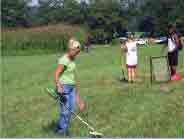
Fig. 1: Scissors, 23CN1, Feature 2, 2004
Household utensils, iron, complete, 165 mm x 64 mm, conserved.

Euro-American traders accompanied the influx of eastern Native American peoples into southwest Missouri during the first quarter of the nineteenth century. The Delaware in particular depended on government annuities paid in silver, which was approximately $6,450 by the time they were in southwest Missouri. For this specific reason, traders saw a persistent and profitable business.

Working through soil from shovel test during 2007 Summer Field School.
William Gillis was one of the first to capitalize on this economic opportunity. During this time, many federal annuities were distributed through agents who also operated trading houses. Gillis was in business with one such company, Menard & Vallé. The primary market for Gillis became the Delaware camps and villages. In 1821-1822, Gillis visited the Delaware camp of Chief William Anderson along the Jacks Fork River in south-central Missouri. The Treaty of St. Mary’s in 1818, which led to the removal of the Delaware from Indiana to Missouri, did not indicate a precise tract of land for exchange. However, Territorial Governor William Clark of Missouri and Territorial Governor James Miller of Arkansas agreed on the James River valley as a temporary reserve. The tribe moved west from the Jacks Fork to the James River, and Gillis followed.
Gillis established a trading post on the James River in partnership with Menard and Vallé of St. Genevieve. The general location of this trading post became known as Delaware Town. The trading post represented a focal point of Delaware activities, serving the hamlets and farmsteads scattered for many miles up and down the central river valley. In 1822, Gillis purchased a second trading post from Louis Lorimier Jr. It was located near the mouth of the Swan River.

Dr. Jones metal detecting at 23CN1.
The James River trading post was a two-room log structure. Additional structures were used for kitchens and housing. While living with the Delaware, Gillis took two Delaware wives. He also had African American slaves. An invoice from the Gillis trading post details the varied assortment of goods that were traded at posts throughout the region.
The Indian annuities and fur trade attracted other traders into the area near the confluence of the James River and Wilson Creek. William Marshall, whose post was south of Gillis’ post, complained to authorities in 1826 that Gillis was illegally trading in the "woods." Although Gillis later obtained a license to trade in that area, it is noted that many similar charges and counter-charges between traders were made as competition increased.
James Wilson was another trader who profited from the Indian annuities. Wilson also operated a trading post in the James River valley which later became the Bell Tavern, owned/operated by Wilson’s widow Elizabeth and William Dye.

Summer field school students examining dirt from shovel test.
Multiple field schools through Missouri State University, beginning in 1999, have been conducted to find the locations of the Delaware Town trading posts. After extensive historical research, it was obvious that many potential locations existed in the James River valley for the trading posts. Finding the location of Gillis’ trading post became a high priority, since it was described as a focal point for the Delaware Town community. Despite years of field research, however, the exact location still remains a mystery.
